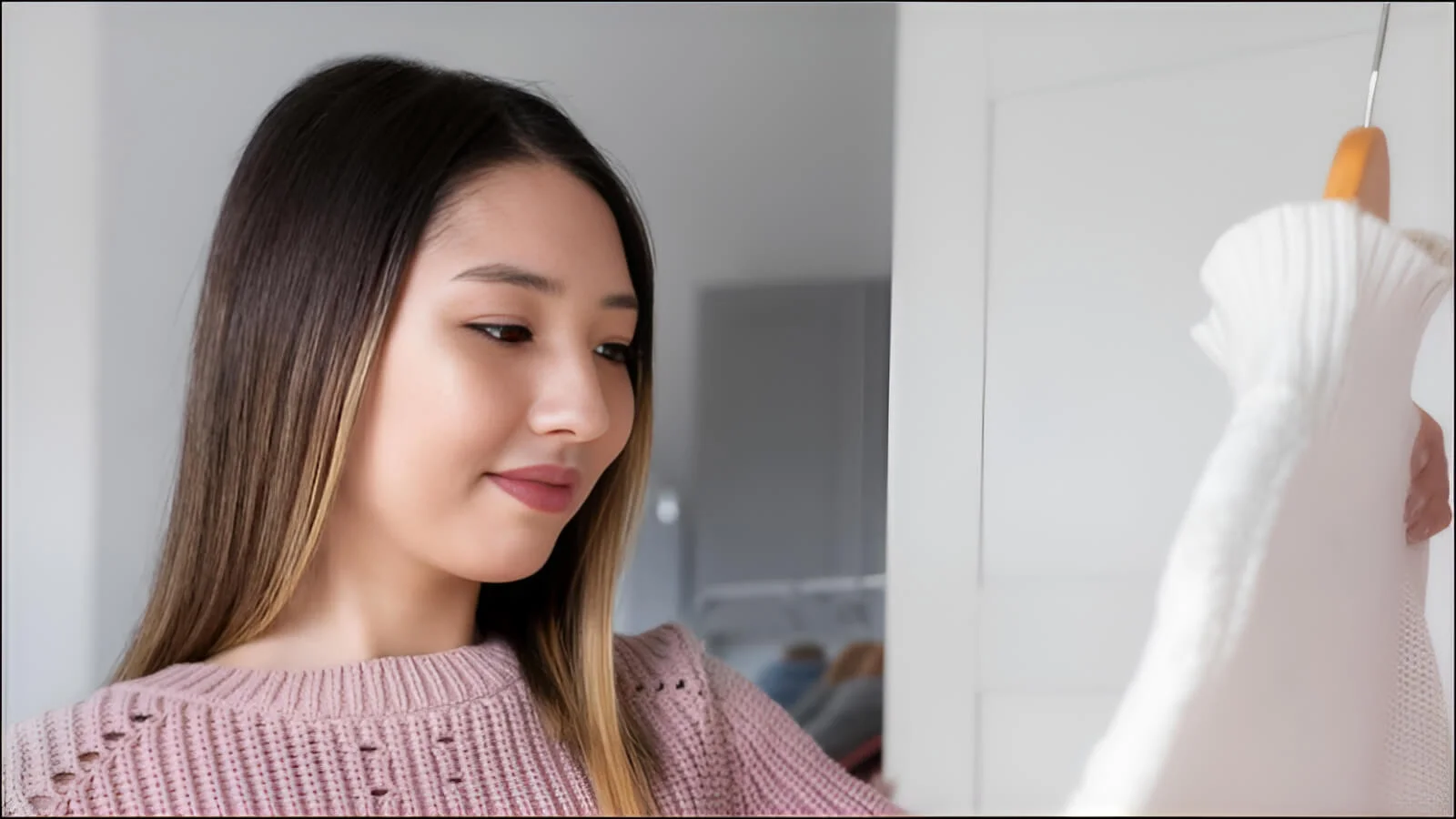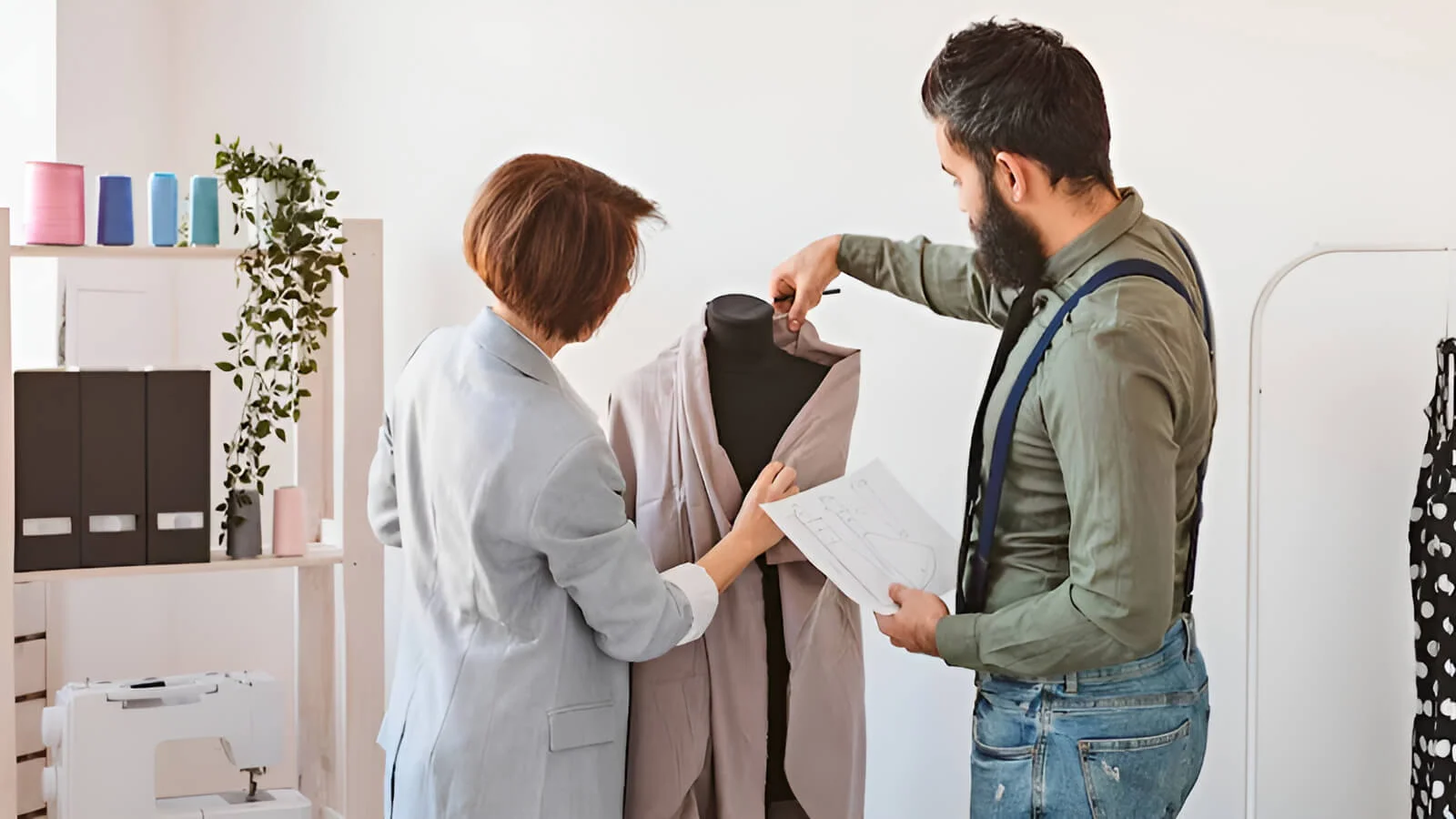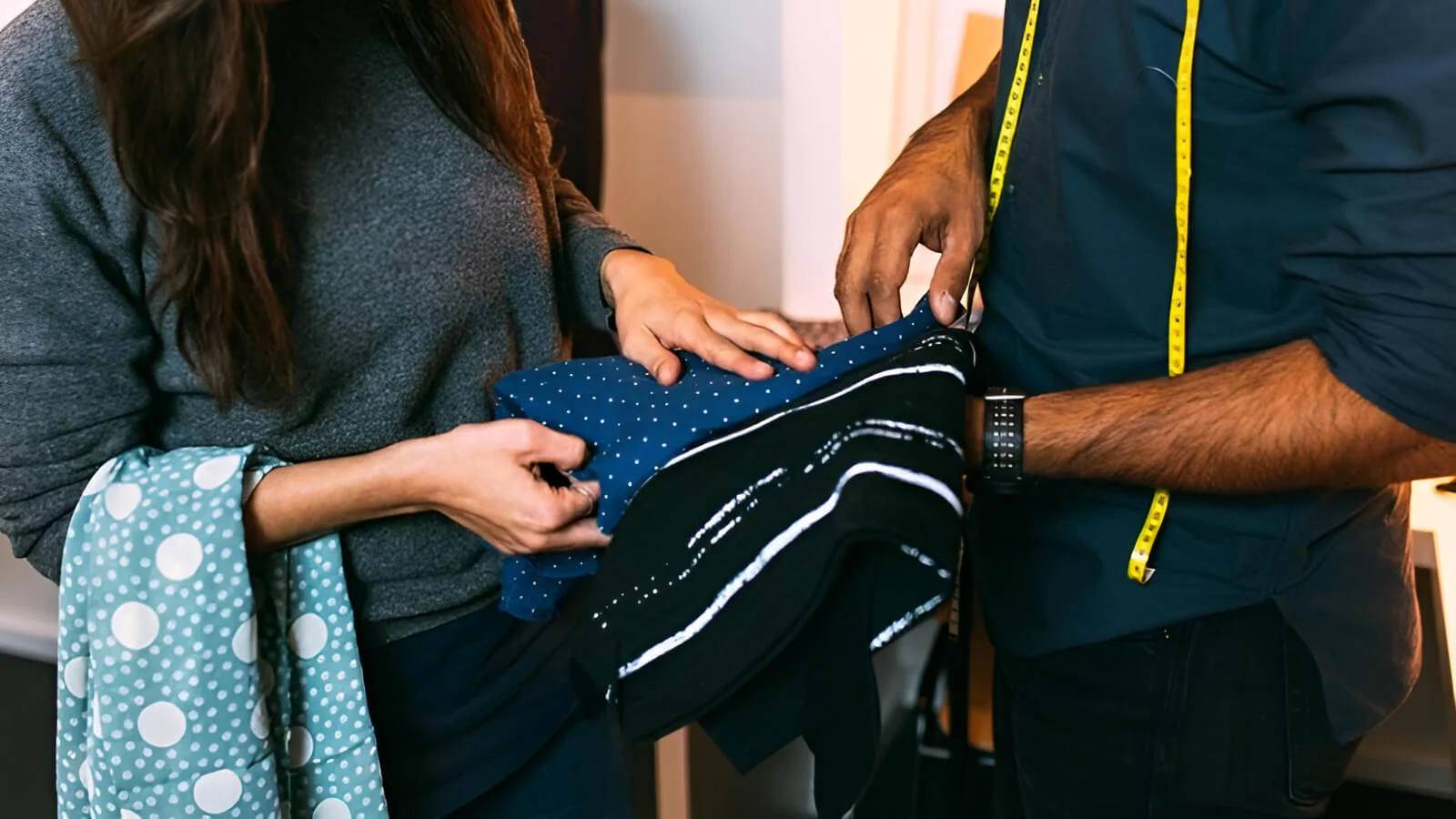What Is A Fit Sample? Your Guide To Perfect Garment Fit
At Packlove, we specialize in helping clothing brands bring their vision to life. That’s why today, we’re diving into an essential step in garment production: the “fit sample”. This guide will explain what they are in simple, easy-to-understand language. It’s for everyone, whether you’re new to fashion or just curious about how clothes are made. Let’s start!
1. What exactly is a fit sample?
1.1 Defining a fit sample
A fit sample is an early version of your garment, like a test model, created primarily to check its fit and appearance before mass production. Think of it as a dress rehearsal for your new shirt or dress; it’s a critical step to ensure the final product will be comfortable and look great on your customers.

1.2 Main goal: To make sure the size, shape, and feel are correct
The purpose of a fit sample in garment manufacturing is clear. It helps you:
- Check the size: Does it match the garment measurements you decided on? These measurements are usually in a document called a tech pack.
- Check the shape and look: How does it hang on a body? Does the style look like your design idea?
- Check the comfort: Can someone move easily in it? Does it feel good to wear?
- Find problems early: Are there any issues with how it’s put together or with the pattern that need fixing?
1.3 What it’s made of
The fabric used for a fit sample is important. It should be very similar to the sample fabric type you plan to use for the final clothes. This means it should have similar weight, drape and stretch. Sometimes, if the final fabric is already available, it’s used. If not, a close substitute is chosen.
Fit samples usually don’t have all the fancy details like brand labels, special buttons, or detailed prints. This is unless these details directly affect how the garment fits, for example, a very stiff appliqué. The main focus is on the fit and basic construction details.
The sewing is generally straightforward, aiming to show how the garment will be put together, but might not be as perfectly finished as the final product.
2. Why are fit samples super important for your clothing?
2.1 Perfect fit, happy customers
There’s a direct link: when clothes fit well, customers feel good wearing them. Happy customers are more likely to buy from you again and tell their friends about your brand. This attention to detail also reduces the number of returns, which saves your brand money and hassle. Fit is often one of the main reasons people choose one brand over another. Having a proper clothing size and fit check sample is key.

2.2 Save money and avoid problems
Making an accurate fit sample helps reduce potential issues during bulk production. Here’s how fit samples save money:
- It’s much cheaper to fix a pattern or a design detail on one sample than on 500 finished garments.
- It avoids wasting entire rolls of expensive fabric.
- It saves on labor costs for making clothes that can’t be sold.
- It prevents costs associated with unsellable inventory or heavy discounts.
This is especially important for new brands or small businesses that might have tighter budgets. A big production mistake can be very damaging. This highlights the importance of fit samples for new fashion brands. Think of fit samples as a smart investment, not an expense.
2.3 Make your design real
A design usually starts as a drawing or a digital design, along with a tech pack. These are 2D representations. The fit sample is often the first time the designer sees their idea as a 3D object that can be worn. This is a crucial part of fashion design & manufacturing.
This allows the designer to check:
- Does the fabric hang and move the way they imagined?
- Is the overall shape what they wanted?
- Do the proportions look right on a human body?
- Do the garment measurements and shape match the vision?
2.4 Good quality starts with good fit
Position “fit” as one of the key pillars of garment quality, just like good fabric and good sewing. This is a fundamental aspect of quality control in apparel production. A garment might be made with the most beautiful, expensive fabric and stitched perfectly, but if it pulls, sags, or is uncomfortable because the fit is wrong, customers will see it as low quality.
A good fit shows care and attention to detail, which customers appreciate.
3. When do you make a fit sample?
3.1 The garment making journey
Making clothes involves several “test” versions or samples. The fit sample is one of these key steps in the garment sampling process and apparel product development. Here’s a typical sequence:
- Idea & design: This is where it all starts – your concept, sketches, and the detailed tech pack for your manufacturer. Understanding the role of a technical pack in garment development is vital.
- Proto sample: The proto sample is the very first physical version. Its job is to see if the basic idea, construction, and fabric choice work together. It might not fit perfectly yet.
- Fit sample: This comes after the proto. Once you’ve seen the proto and made some basic changes, the fit sample is made. Its main job is to perfect the fit, size, and how it looks and feels on a body. You need to know when a fit sample is made in the production timeline.
- Size set sample: Once the fit is approved on your main size, a size set sample is made. This means samples are created in other sizes to ensure sizing is correct across the range.
- Pre-production sample (PPS): The pre-production sample is like the “dress rehearsal” sample. It should be made with the final fabrics, trims, colors, and packaging. You check everything on the PPS.
- Bulk production: After the PPS is approved, your manufacturer starts making all the garments for your customers. This is the final production stage.

3.2 Timing is key
The fit sample typically comes after the proto sample. The proto helps catch big design or construction issues. Once those are sorted, you focus on the specific details of fit. This is done on one main size.
It comes before size set samples because it doesn’t make sense to create samples in all your different sizes if the fit of your base size isn’t perfect. You approve the fit on the base size first, then those corrections are applied when creating the other sizes. It’s also key to understand the difference between a fit sample and a pre-production sample: the fit sample focuses on fit, while the PPS is a final check of everything.
- Fit sample: Focus is 100% on fit.
- Pre-production sample (PPS): This is the final check of everything – final fabric, all trims, colors, packaging, and yes, one last check on the fit.
3.3 Why this order helps make things smooth
This sequence in apparel product development and the garment sampling process offers several benefits:
- Saves time and money: You fix problems step-by-step. You don’t make a full set of sizes if the main size isn’t right.
- Better quality: Each step allows you to focus on specific things, leading to a better final product.
- Less stress: It’s an organized way, reducing big surprises or expensive mistakes later.
4. What to check on a fit sample
4.1 Do the measurements match?
Your tech pack is your garment’s recipe book, and it includes a page with all the important measurement specifications.
How to measure:
Lay the garment flat and smooth on a table.
Use a good quality measuring tape.
Measure key points. For example:
- For a shirt: chest width (pit to pit), body length (from high shoulder point to hem), sleeve length, shoulder width.
- For pants: waist, hips, inseam, front rise, back rise, leg opening.
Compare these measurements with your tech pack.
Note “tolerances”: small differences might be acceptable. Your tech pack might list these. Big differences need fixing.
Being accurate and consistent in how to accurately measure a garment for quality control is vital.

4.2 How does it look and hang?
Measurements are important, but you also need to see the garment on a 3D form to how to assess garment fit. This means using:
- A fit model: A person whose body measurements are very close to your target customer for that size.
- A dress form: A mannequin in the correct size.
What to look for during this garment fitting:
- Balance: Does it hang straight? Are side seams vertical?
- Drape: How does the fabric fall? Does it cling or flow nicely?
- Silhouette: Is the overall shape what you intended?
- Pulling or twisting: Any stress lines, especially around buttons, zippers, armholes, or crotch?
- Gaping or bagginess: Too loose in areas? Neckline gape? Weird folds?
- Key areas: Check neckline, armholes, and hemline.
4.3 Is it comfortable?
If using a fit model, their feedback on comfort during garment fitting is gold. Ask specific questions. Check ease of movement. Ask the fit model to:
- Raise their arms.
- Bend elbows and knees.
- Sit down and stand up.
- Twist their torso.
- Walk around.
During these movements, look and ask if any part feels too tight, restrictive, too loose, or rubs. Relate comfort to the garment’s purpose.
4.4 Are the stitches okay? Is it put together well?
While the pre-production sample (PPS) is where you check all final sewing quality, it’s good to look at basic garment construction and construction details on the fit sample too.
What to quickly check:
- Seams: Mostly straight and flat? Any open spots or missed stitches?
- Stitching: Generally okay for a sample?
- Assembly: Are parts like sleeves, collars, or pockets attached correctly?
The goal here is to catch big mistakes, not tiny stitch issues.
4.5 Note any fixes needed for the next sample or for final approval
Good notes are super important during the sample review process. Don’t rely on memory! How to give feedback:
- Be specific and clear.
- Use your tech pack: Write comments on the spec sheet.
- Take photos of problem areas.
- Suggest solutions or describe the problem clearly for the pattern maker.
Explain that many fit issues are fixed by pattern adjustments. Clear communication ensures everyone understands changes for the next sample or if it’s approved. This also helps address common garment fitting issues and how to correct them.
5. Who looks at and approves the fit sample?
So, who gets the final say on the fit sample? It’s usually a team effort. Find out who uses or approves a fit sample:
5.1 The brand owner or designer
They know the vision and if the fit meets their standards.

5.2 A technical designer or pattern maker helps check the technical details
They check the sample against the tech pack, understand how to fix fit problems by changing the pattern, and offer technical advice.
5.3 Your manufacturer will also be involved
They need to see the sample and understand the comments to make any necessary changes.
6. Quick questions about fit samples (FAQs)
6.1 How many fit samples do people usually make?
It can vary! Sometimes one is enough. More often, it takes 2 or 3 tries to get it perfect. Don’t worry if it takes a couple of rounds – that’s normal!
6.2 Can I use any cheap fabric for my fit sample?
It’s best to use fabric very similar in weight, drape, and stretch to your final fabric. Using a very different fabric won’t give an accurate idea of the fit.
6.3 What if my fit sample isn’t good?
That’s okay and normal! The point is to find problems. Make detailed notes and photos of what needs to change. Your pattern maker and manufacturer will adjust the pattern and make a new fit sample.
6.4 What’s the main difference between a fit sample and a proto sample?
A proto sample is usually the very first physical version to check basic construction and design. A fit sample comes after and its main focus is perfecting sizing, proportions, balance, and comfort. This is a key aspect of fit sample vs pre-production sample differences.
6.5 What is a “fit model”?
A fit model is a person hired because their body measurements accurately represent your target customer for a specific size. They try on samples so designers can see how clothes fit, hang, and move on a real body and give feedback.
6.6 Do I need a tech pack for a fit sample?
Yes, absolutely! A tech pack is like the blueprint for your garment. It contains measurement specifications, construction details, and fabric info. Without a good tech pack, it’s hard to create an accurate sample. The role of a technical pack in garment development is essential.
Explore more:
Fit samples are an essential part of making clothes. They help achieve a great fit, ensure the garment looks as intended, and lead to happier customers and fewer returns. The fit sample stage is crucial for creating quality products. And when your fit is approved and you’re ready for the next step, Packlove is here to help with your branding needs!






















